SHOULD UST relax academic rules to accommodate its athletes?
The UST High School department has implemented a new academic program specifically for student-athletes. It involves a “special” grading system that rewards an athlete’s performance on court.
The new program provides academic incentives based on game performances, and special considerations for projects, assignments, and quizzes.
Frederick Manubay, a Chemistry teacher and chairperson of the Program in Academics for Student-Athletes (PASA), said the program aims to “lessen if not eradicate” cases wherein players get the boot due to academic deficiency.
Manubay said the system also seeks to avoid instances where coaches approach teachers to ask for considerations for their top players.
“I have to admit that coaches approach teachers to pass their athlete,” he said. “That is why I suggested this program. I wanted to standardize [everything] in order to give [student-athletes] every possible assistance.”
In the program, each student-athlete will be given the privilege of acquiring “at least the minimum competencies” or a lower raw score of 47 (which is equivalent to 75-percent passing rate) compared to the standard 63 raw score for graduating students.
Athletes who missed exams or activities will also be given “equivalency points” based on win-loss standings of their games. This means they better rack up those Ws to make up for their absence in class.
According to Tess Ramos, co-chairperson of the program, student-athletes would be given a 60-percent incentive for a missed activity in case of a victory in a game. The incentive would be 50 percent in the event of a loss.
During championship games, a 100-percent incentive will be given for athletes who missed an activity or exam but ended up winning the title. Athletes who would place first and second would get a 90-percent and 80-percent incentives, respectively.
Despite the “adjustment” in the grading system, Ramos said no “special treatments” would be given to athletes, arguing that the curriculum and the approach of teaching would still be the same.
“We are not biased in favor student-athletes. There is no significant difference between regular student and student-athletes as far as performance is concern,” Ramos said.
“We just consider training and game schedules. We, teachers, adjust to them. The school looks for ways to help them in their studies,” he said.
Marishirl Tropicales, the high school principal, said the program was “more of providing student-athletes an opportunity to address their needs and difficulties.”
Even with the new system, PASA section adviser Isabel Casas said two and three student-athletes failed in Mathematics and Science, respectively, while one and four failed Christian Living and TLE, respectively. She did not name them.
“[It is] only a handful [who] failed the first grading. I can see that they (athletes) are trying their best,” she added.
The UST administration launched an “experimental” PASA section (ST. Digna), composed of 42 student-athletes last summer. According to Tropicales, there was no formal evaluation conducted in the program yet since it was still on its first year.
“The result of the evaluation of the program will tell us its strong and weak points which would help us to improve and polish the program,” Tropicales said. “But if PASA will not really work, we will think of other ways to address the needs of our student-athletes.”

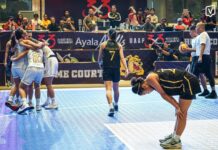
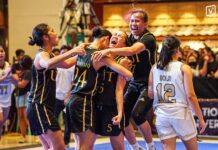
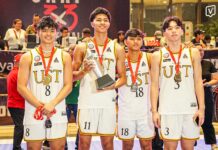
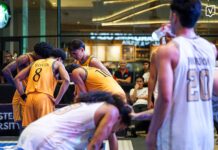
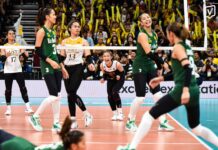
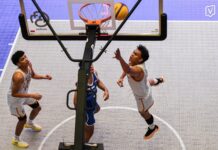
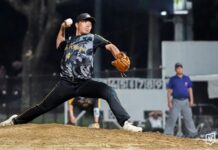










“I think sports are a great adjunct to school life. The problem is that sports have moved from adjunct to the spotlight, pushing academics to the side.”
http://www.elisepatkotak.com/index.php?/site/comments/athletics_shouldnt_outrank_academics/
” no “special treatments” would be given to athletes”
isn’t the entire program special treatment for student athletes?
So UST is basically saying it’s alright to get miserable grades as long as you win? Interesting.
I feel strongly against this experimental program. I am an alumnus of the College of Science and currently an educator as well. I feel that we are encouraging academics to take a backseat to athletics if we allow such program.
Part of the challenge of being a student-athlete is having to balance the responsibilities of representing the university in whatever sports the individual is in and the responsibility of advancing ones’s learning. Of the two, I humbly believe that the latter is more important.
Being a student and an athlete at the same time builds an individual’s character. I don’t see how this experimental program could do that. If anything, this would tempt our student-athletes to sacrifice their academics in favor of athletics. PLEASE consider what you are willing to sacrifice if you put this program in motion.
This is how some universities churn out graduates that are practically illiterate.
wow, can’t wait to see it applied in tertiary education, but wait, aren’t they doing this in IPEA already? You can really tell that education is not the priority of UST.
I am a graduate of UST Faculty of Arts and Letters and I really feel sad about this. I think that UST High School should think of other support systems which can help student athletes rather than make this move which is an insult to UST’s ideals as an academic institution. We celebrate 400 years of grace and we should develop means in order to uplift our school’s standards. UST is primarily a school. It’s halls boast of heroes, writers and noble men and women in the service of the nation and of the world. Now, as an educator, I discover what our students need in order to survive in life. Life is not just a ball game. Life includes reading, computing, analyzing and all. What is important is that our students learn so that one day they can LIVE. Life is not a game. Let us help them live by helping them learn the fundamentals in this most important stage of their lives. May this be our concern.